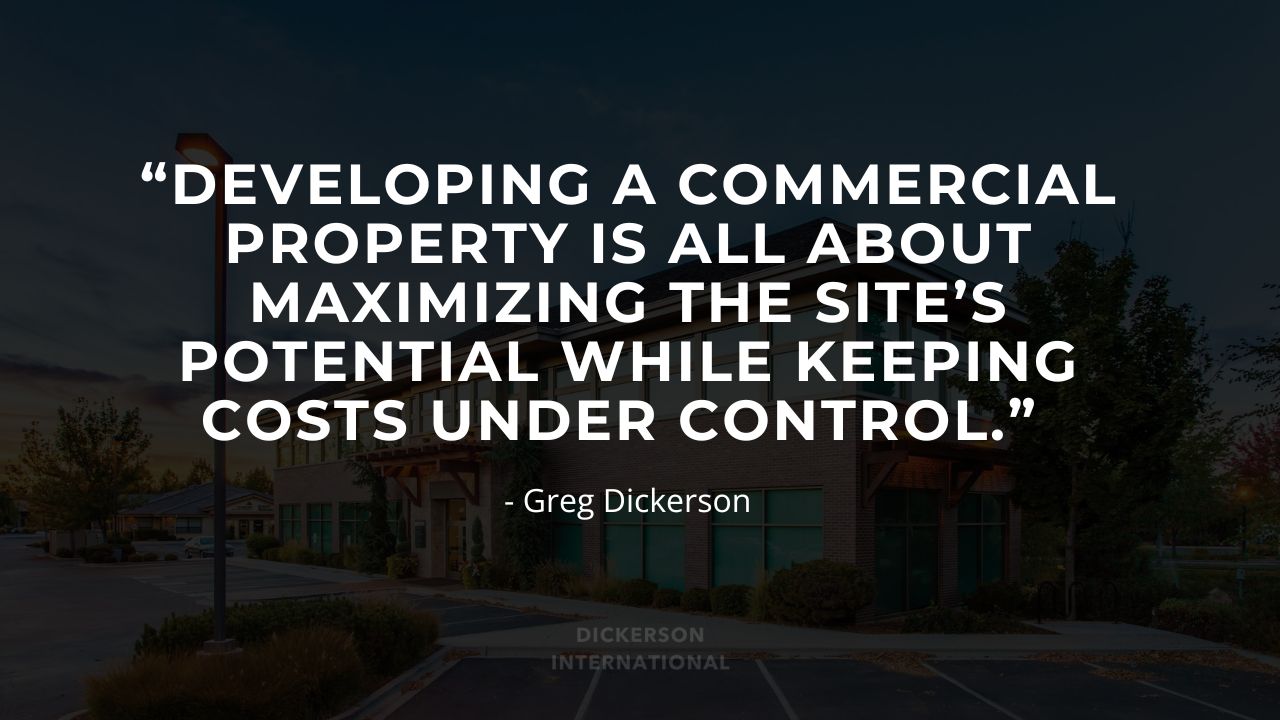FREE Expert Guide: How to Develop Commercial Property for Massive Profits
Commercial real estate development is one of the most powerful ways to build long-term wealth—but only if you get the process right from the start. Whether you're new to commercial real estate development or looking to refine your process, here are some of the key steps to successfully developing commercial property.
Step 1: Start With The Land & Understand What You Can Do With It
The foundation of any successful commercial development is understanding both the land itself and its potential uses. Commercial and development purchase contracts typically include a due diligence period, giving you time to evaluate zoning, utilities, environmental factors, and financial feasibility. This critical step ensures you’re making an informed decision before fully committing to the purchase. This due diligence period includes activities like:
- Visiting your local municipality (city or county) to review zoning regulations, density allowances, setbacks, and gain a clear understanding of the entitlement process.
- Checking parking requirements for different property uses such as office, retail, hospitality, or assembly spaces.
- Identifying easements, stormwater requirements, and utility availability.
- Evaluating potential obstacles such as the need to relocate power poles, sewer lines, or other utility infrastructure.
- Determining if the property has unique zoning challenges, such as setbacks on corner lots, which can impact usable space.
These initial considerations determine whether the property can accommodate your vision—or if you need to reconsider your plans. Skipping this step could lead to costly surprises down the road.
Step 2: Conduct Site Feasibility - Does It Make Sense to Move Forward?
Once you've assessed the land's potential, the next step is ensuring the project is financially viable.
- Obtain preliminary construction cost estimates from general contractors or design-build firms to use in your financial models and assess the project's overall feasibility. These estimates will provide a rough idea of cost-per-square-foot for construction and help determine if the project is worth pursuing further. (As site planning progresses, refine these estimates to reflect any new findings or adjustments.)
- Engage a civil engineer to assist with site planning, including grading, stormwater management, and utility layouts.
- Coordinate with the civil engineer to conduct geotechnical and environmental studies, ensuring soil stability and compliance with regulatory requirements.
At this stage, your goal is to confirm that the project makes sense financially and structurally before committing significant resources. You want to determine not only if you can build, but if you can build profitably.
Step 3: Site Planning & Design
At this stage, assembling the right team of professionals is crucial. Some developers choose to hire individual experts, while others work with a design-build firm, which streamlines the process by managing both design and construction under one contract. Key players typically include:
- Civil Engineer: Handles site planning and ensures the design meets local regulations.
- Architect: Develops the building design and integrates it with the site plan.
- General Contractor: Oversees construction, manages subcontractors, and ensures timely project completion.
“Developing a commercial property is all about maximizing the site’s potential while keeping costs under control,” says Greg Dickerson. Having the right team in place will help streamline the process and avoid costly mistakes.

Step 4: Purchasing the Land
By this point, you should have completed your site planning and design, have a strong understanding of zoning, environmental constraints, and financial feasibility, and have all major entitlements, permits, and approvals in place.
- Land purchases generally close within 30 to 45 days after financing and funding are secured, as outlined in the contract.
- By the time you close, you should be fully prepared to transition seamlessly into site planning and pre-construction, minimizing delays and ensuring a smooth start to the project.
Step 5: Transition to Construction
Once you close on the purchase, you’re ready to transition into the construction phase. At this point, your focus shifts to executing the project efficiently and staying on schedule. Key activities include:
- Finalizing stormwater drainage plans and utility connections to ensure compliance with local requirements.
- Coordinating with your general contractor to establish a detailed construction timeline and budget.
- Mobilizing resources and preparing the site for construction, including grading, clearing, and infrastructure setup.
- Overseeing the construction process to ensure quality control and adherence to the approved plans.
This phase is where your vision starts to take shape, transforming raw land into a tangible, income-generating asset. By maintaining clear communication with your team and addressing challenges proactively, you can keep the project on track and avoid costly delays.
Why Commercial Development is a Smart Investment
Developing commercial property can be an excellent long-term investment strategy. A well-planned project can generate consistent rental income, appreciate in value, and serve as a stable asset in your portfolio. By leveraging smart site planning, professional expertise, and thorough due diligence, you can minimize risk and maximize profits.
Whether you’re developing small single-tenant properties or large multi-unit commercial spaces, the development process is your blueprint for success. By mastering these steps—thorough due diligence, financial modeling, strategic site planning, and assembling the right team—you can transform raw land into a thriving, income-generating asset.

Commercial development isn’t just about building structures, it’s about creating opportunities, solving problems, and leaving a lasting impact on the community.
There’s no better time to start turning your vision into reality.
Want to learn more? Get your step-by-step BLUEPRINT to a Real Estate Wealth-Building Machine—no experience needed!
